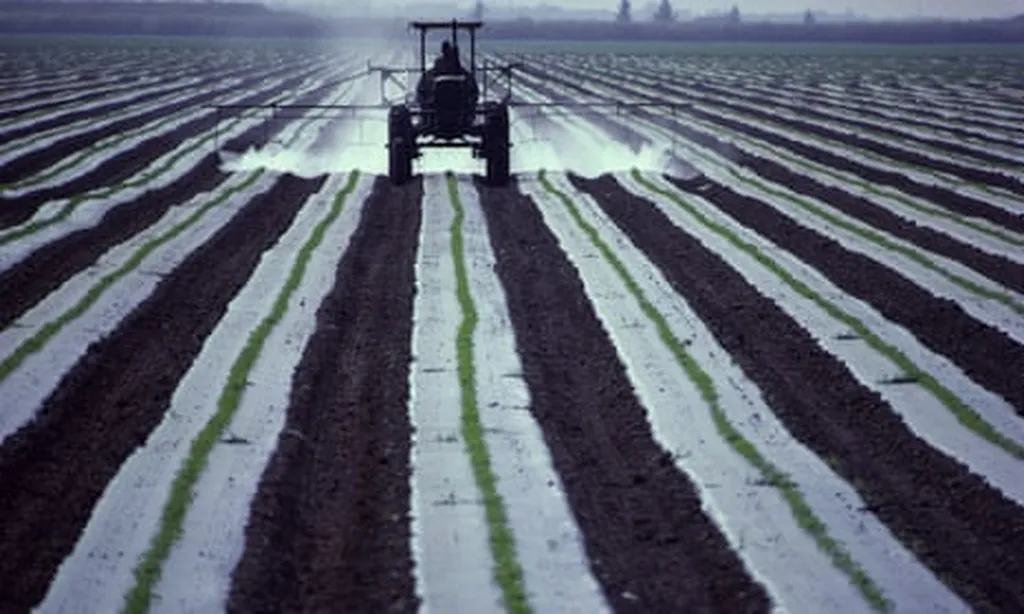In the heart of Russia’s agricultural landscape, a groundbreaking study led by Evgeny V. Truflyak from the Kuban State Agrarian University is revolutionizing the way farmers approach nitrogen fertilization. Published in the journal ‘Инженерные технологии и системы’ (Engineering Technologies and Systems), this research is not just about increasing crop yields; it’s about redefining efficiency and sustainability in agriculture through the power of artificial intelligence.
Winter wheat, a staple grain crop, has long been a barometer for agricultural productivity. However, optimizing nitrogen nutrition for this crop has been a challenge, especially in large agroholdings where fields vary significantly in productivity. Traditional methods of fertilizer application often fall short, leading to either under-fertilization or over-fertilization, both of which can have detrimental effects on yield and the environment.
Truflyak’s study introduces a novel approach to this age-old problem. By leveraging satellite imagery and advanced AI models, the research team developed a system for variable rate application of nitrogen fertilizers. This system takes into account a wide range of factors, from vegetation indexes to historical data, to determine the optimal amount of fertilizer for each part of a field.
The study was conducted on two fields in the Ust-Labinsk district of the Krasnodar Territory, each divided into three variants: the Russian scheme, the European scheme, and the economic scheme. The results were striking. On the first field, the Russian scheme yielded an average of 6.31% more than the economic scheme, while the European scheme yielded 2.56% more. On the second field, the European scheme outperformed the economic scheme by 5.25%, and the Russian scheme by 3.08%.
“The increase in grain-unit is directly proportional to the decrease in protein and gluten content,” Truflyak explained. “This means that not only are we increasing yield, but we’re also improving the quality of the grain.”
The economic implications of this research are substantial. By using the European technology, the farm saw a decrease in production costs by 400 thousand rubles compared to the control scheme. Fertilizer costs decreased by 2,567 rubles per hectare, and revenue from one hectare increased by 6,401 rubles. Attributable profit increased by 9,546 rubles, and gross profit increased by 150 thousand rubles, with a 5.3% increase in profitability.
This research is a game-changer for the agricultural industry, particularly in the context of variable fertilizer application, NDVI (Normalized Difference Vegetation Index), and artificial intelligence. As Truflyak noted, “The results of the proposed validation methods and created model of variable rate application of nitrogen fertilizers were used in the work of neural network. Under real agricultural conditions, there was evaluated the efficiency of the neural network in terms of yield by creating a scale of performance in relation to existing methods of fertilizer application.”
The study’s prospects are even more exciting. Future research will involve expanding the application area for the developed technology and AI model. The goal is to integrate a wider range of dynamic data, not just for nitrogen fertilization but also for basic fertilization. This will make the model more adaptable to changing vegetation conditions and enable faster decision-making.
In the broader context, this research lays the foundation for integrated digital agrocenosis management platforms. Here, AI models will play a key role in optimizing all stages of agricultural production, from planting to harvesting. As the world grapples with the challenges of climate change and food security, such innovations are not just welcome; they are essential.
Truflyak’s research is a testament to the power of AI in transforming traditional industries. It’s a reminder that the future of agriculture is not just about bigger yields, but about smarter, more sustainable practices. And in that future, artificial intelligence is not just a tool; it’s a partner in the journey towards a more productive and sustainable world.

